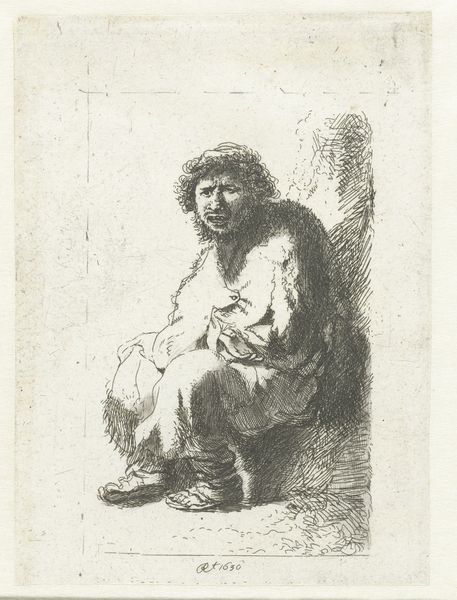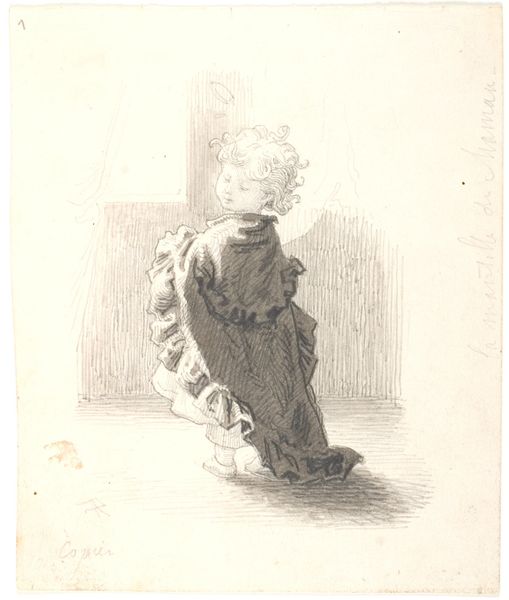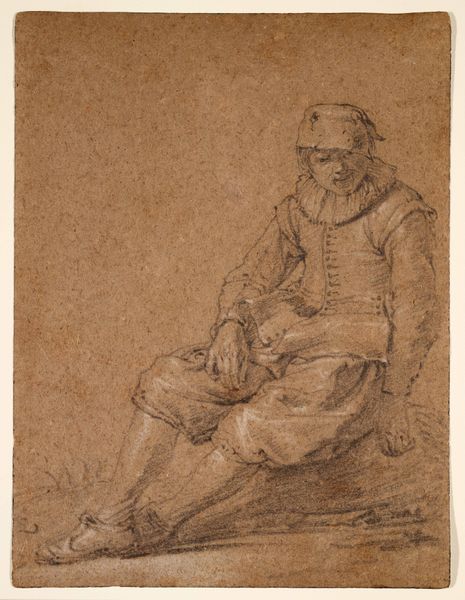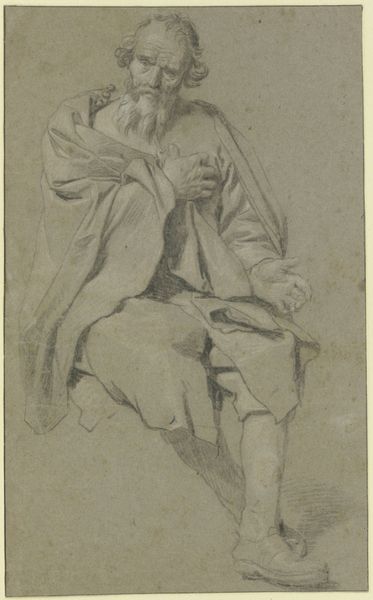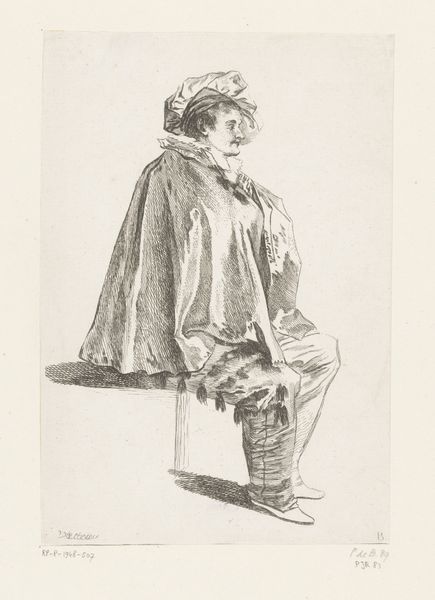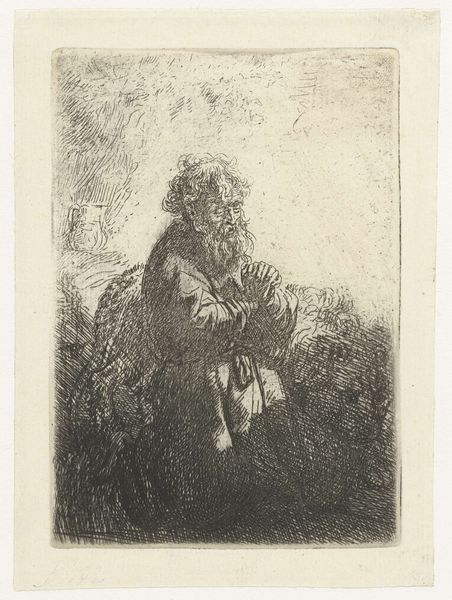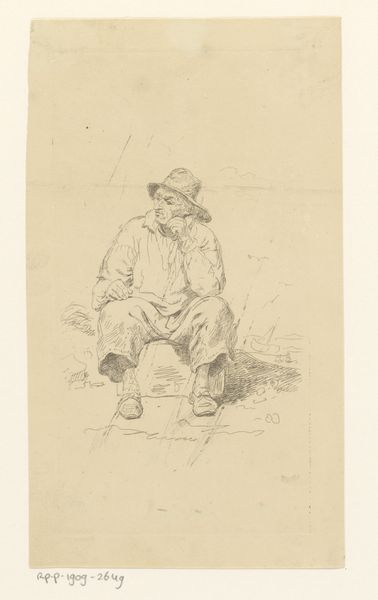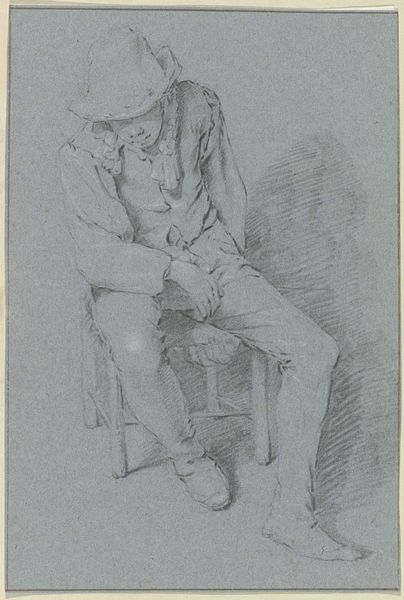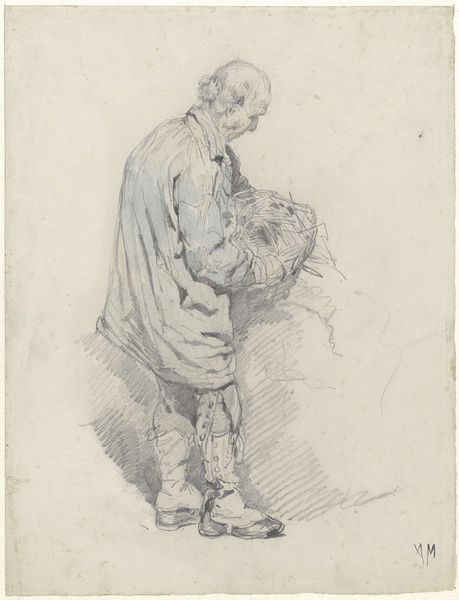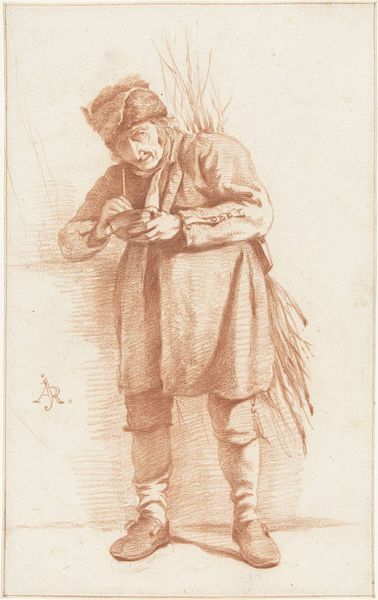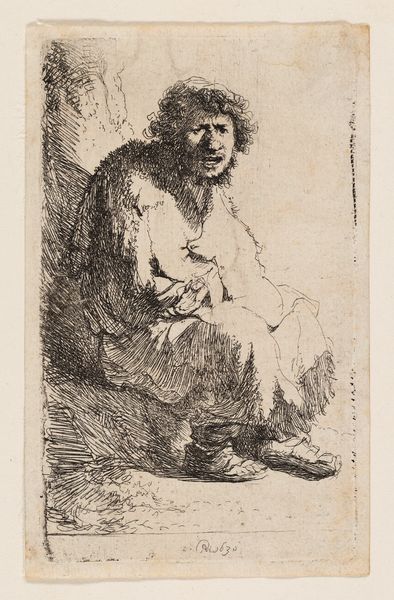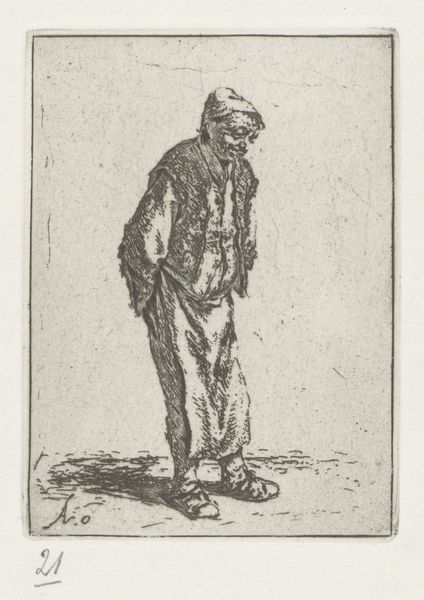
Dimensions: 140 mm (height) x 106 mm (width) (bladmaal)
Curator: At first glance, this work gives me a feeling of intimate contemplation, like peering into someone's quiet inner world. Editor: Indeed. What we’re looking at is a pencil and paper drawing entitled “Peiter Beinløs” by Hans Smidth, created sometime between 1839 and 1917. It's currently held here at the SMK, Statens Museum for Kunst. Curator: There's such tenderness in the lines, capturing not just a likeness but a lived experience. It seems like the sort of person you'd find by the docks, a salt-of-the-earth character. The casual strokes contrast sharply with the very deliberate capture of character. Editor: It’s true. Smidth was interested in the daily lives of ordinary people, falling under the umbrella of genre-painting so prominent in the romantic period. This piece is part of that focus, providing glimpses into Danish society through intimate, casual portraits. Notice the almost studied disinterest the sitter gives to the artist, while seated with a clear level of discomfort on what looks to be a stiff and unleveled bench. Curator: Exactly! I love that juxtaposition – the rugged subject, the delicate medium. There's a romantic sensibility for sure, but stripped down, raw. It is so evocative to the conditions under which the drawing was realized. The sitter isn't the painting that Smidth is painting; it is more that Smidth paints "the painting" through a man’s figure. I’d venture to call this Romantic Realism! Editor: I think I understand your interpretation but do not share the conviction that this is "Romantic Realism", because there seems to be some glorifying intent behind the capturing of a ruggedness. Also, who's to say there are elements of a self-portrait at play? Curator: Mmm, fascinating. Yes, who is to say! Well, this has made me feel more deeply appreciative of not only the portrait in front of us, but of how Smidth was able to capture daily life through such specific observations of common-folk subjects. It makes me wonder...who, if anyone, has done the same thing today? Editor: Absolutely. Thinking about how the art of the time functioned, Smidth contributed in his own way to social dialogues through intimate glimpses, pushing audiences to consider their fellow human beings. A potent and vital task in art's broader public role.
Comments
No comments
Be the first to comment and join the conversation on the ultimate creative platform.
